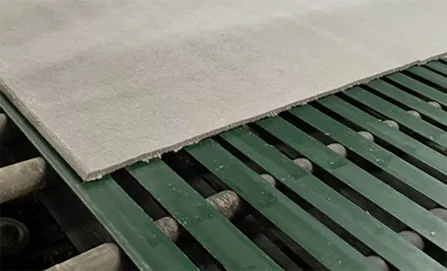12 月 . 06, 2024 17:11 Back to list
t bar ceiling grid
Exploring T-Bar Ceiling Grids A Comprehensive Overview
T-bar ceiling grids are an essential aspect of modern commercial and residential interior design, serving both functional and aesthetic purposes. Known for their versatility and ease of installation, these systems have become increasingly popular in various environments, from offices to retail spaces and beyond.
What is a T-Bar Ceiling Grid?
A T-bar ceiling grid, also known as a drop ceiling or suspended ceiling, consists of a framework of metal channels arranged in a grid pattern. The T shape refers to the cross-section of the main runners and cross tees that make up the grid. This framework is suspended from the building's overhead structure, allowing space between the original ceiling and the dropped ceiling. The resulting void is utilized for various purposes, including hiding electrical wires, plumbing, and HVAC ducts, as well as providing a clean surface for ceiling panels.
Advantages of T-Bar Ceiling Grids
1. Aesthetic Appeal T-bar ceiling grids allow for a polished finish in interiors. They can be outfitted with a variety of tiles—be it acoustic, decorative, or mineral fiber—enabling countless design possibilities that fit the aesthetic needs of any space.
2. Sound Absorption Many tiles used in T-bar ceilings are designed to enhance acoustics. This is particularly beneficial in settings like offices, schools, and hospitals, where noise reduction can significantly improve comfort and productivity.
3. Accessibility One of the primary benefits of a T-bar ceiling grid is the easy access it provides to the utilities hidden above. If maintenance or repairs are needed, ceiling tiles can be conveniently removed without disrupting the entire ceiling structure.
4. Cost-Effectiveness T-bar ceilings often represent a more economical solution than traditional plaster ceilings. The materials and labor costs associated with installation are typically lower, making it an attractive option for budget-conscious projects.
5. Energy Efficiency Many T-bar ceiling tiles are designed with insulation properties, helping to maintain the climate control within a building. This can lead to reduced heating and cooling costs over time.
Installation Process
t bar ceiling grid

The installation of a T-bar ceiling grid involves several steps
1. Planning and Measurement Accurate measurements of the intended space are crucial. Plans must include the placement of lights, air vents, and any other ceiling fixtures.
2. Marking the Layout A level line is marked around the perimeter of the room to determine the height of the ceiling. Then, a grid layout is drawn to visualize the position of the main runners and cross tees.
3. Hanging the Main Runners The main runners are installed first, suspended from the ceiling using wire hangers. It's critical to maintain levelness here to ensure the ceiling grid is even.
4. Installing Cross Tees Cross tees connect between the main runners, creating the T-shaped grid pattern. The installation needs to be precise to ensure that ceiling tiles fit properly.
5. Inserting Ceiling Tiles Finally, the selected ceiling tiles are placed securely into the grid. Depending on the design, the tiles can be laid in a uniform pattern or a more intricate layout.
Design Considerations
When selecting materials for T-bar ceiling grids, it’s important to consider both functionality and design. Options range from standard white tiles to more decorative alternatives that can enhance the visual interest of a room. The integration of efficient lighting solutions within the grid can also elevate the overall ambiance.
Conclusion
T-bar ceiling grids represent a practical and stylish choice for modern interiors. Their abundance of design options, accessibility for maintenance, and cost-effectiveness make them a favorite among architects and builders alike. As the demand for flexible and efficient interior solutions continues to grow, T-bar ceiling grids will likely maintain their prominence in the construction landscape, providing not only structural support but also enhancing the overall aesthetic of commercial and residential spaces. Whether you are renovating an office or constructing a new home, considering a T-bar ceiling grid can be a transformative decision that enriches the environment with both practicality and style.
-
Revolutionizing Interior Design with Ceilings t grid Suspended SystemNewsOct.29,2024
-
Revolutionizing Ceiling Design with ceiling access panel with Gypsum Tile WaterproofNewsOct.29,2024
-
Revolutionizing Interior Design with PVC Gypsum Ceiling: A Comprehensive GuideNewsOct.29,2024
-
Elevating Interior Design with High quality Mineral Fiber Ceiling TilesNewsOct.29,2024
-
Revolutionizing Interior Design with PVC Gypsum Ceiling: A Comprehensive GuideNewsOct.29,2024
-
Elevating Interior Design with High-Quality Mineral Fiber Ceiling Tiles: A Comprehensive GuideNewsOct.29,2024







